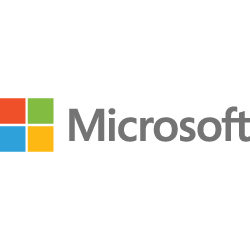4.45
Asana Review
Discover our Asana review. Explore its features, pricing, security, and latest updates. See how its collaboration and support deliver true value for money.
Introduction to Asana
This comprehensive Asana review explores one of the most popular work management platforms today. Asana empowers teams to organize, track, and manage their projects with impressive clarity. We'll provide a brief overview here before diving into its many features, helping you decide if it's the right fit for your team.For those considering Getting started with Asana, we'll cover the Asana basics, highlighting its core functionalities and the many Benefits of Asana. Understanding Asana's interface and capabilities is crucial for leveraging its full potential, and this review aims to guide you through its power.
Comprehensive Overview and Target Audience of Asana
Asana stands as a titan in the crowded work management software market. Its core purpose is to eliminate “work about work” by providing a single source of truth for teams to organize: track: and manage their projects from start to finish. Positioned as a premium platform that blends robust functionality with an inviting user interface: Asana aims to bring clarity and accountability to complex cross-functional initiatives. It moves beyond simple task lists to offer a comprehensive system for planning workflows: visualizing dependencies: and connecting daily tasks to overarching company goals. This focus on strategic alignment distinguishes it from more basic competitors: making it a powerful engine for organizational productivity and goal attainment. It is not merely a tool for tracking what needs to be done; it is a platform designed to provide visibility into why the work matters.
The ideal customer profile for Asana is broad but has distinct characteristics. It thrives in organizations ranging from fast-growing startups to large enterprises that require a structured yet flexible approach to collaboration. Industries like technology: marketing: creative services: and operations are primary beneficiaries. For Product Managers: Asana’s roadmap and timeline features are invaluable for tracking feature development. Marketing Teams leverage it to coordinate complex campaigns: manage content calendars: and track deliverables across multiple channels. Operations Teams build standardized processes and repeatable workflows using its templates and automation rules. Finally: Creative and Design teams use it for intake requests: feedback cycles: and asset proofing: often integrating it with their specialized tools to streamline their creative processes. Asana is for any team that values visibility and process over unstructured chaos.
Key Takeaways
- Best for Visual Workflow Management: Asana excels with its intuitive visual tools like Timeline for Gantt charts: Boards for Kanban-style workflows: and Calendar views: making it ideal for teams who need to see how all the pieces of a project fit together.
- Powerful but Pricey Automation: The Rules feature provides robust no-code automation that saves significant time on routine tasks: but accessing its full potential requires an investment in the more expensive Business or Enterprise plans.
- Scales from Team Project to Company Portfolio: The platform is uniquely designed to grow with a company: scaling from a single project board for a small team to a complex system of interconnected Portfolios and Goals that give executives a real-time view of strategic initiatives.
- Requires User Adoption for Maximum ROI: While easy to start: Asana’s true power is unlocked when teams fully commit to using it for communication and updates. Its value diminishes if it becomes just another checklist tool without deep team adoption.
User Experience and Functional Capabilities
Diving into the platform provides a masterclass in thoughtful user interface design. The core of the Asana user experience insights is its clarity and approachability. The UI is clean: colorful: and logically structured around a three-pane view: a left-hand sidebar for navigation between teams and projects: a central pane displaying the project tasks in your chosen view: and a right-hand pane for task details. This layout minimizes context switching and keeps critical information readily accessible. Navigation is intuitive: and the platform rewards users with subtle animations and even a celebratory unicorn flying across the screen upon task completion: small details that foster a positive user experience and encourage engagement. Unlike some competitors that can feel overwhelming with features from the outset: Asana guides users gently into its more advanced capabilities: making the initial learning curve feel less steep. This focus on usability is a significant factor in its widespread adoption: as it allows teams to get up and running with minimal friction before they learn how to use Asana’s deeper functionalities.
Core Features and Functionality
Beyond its polished surface: Asana is packed with powerful features designed to manage complex work. Three core capabilities stand out as essential to its value proposition.
- Feature One: Multiple Project Views (Timeline: Boards: List: Calendar). Asana understands that different workflows require different perspectives. The List view is a simple: effective to-do list. The Boards view provides a Kanban-style layout perfect for agile workflows and tracking progress through stages. The Calendar view is essential for content and event planning. The standout: however: is the Timeline view. It is a dynamic Gantt chart that allows users to map out project plans: set dependencies between tasks: and instantly visualize how a delay in one area impacts the entire project. The ability to switch between these views on the fly provides unparalleled flexibility: catering to the preferences of every team member.
- Feature Two: Rules (Workflow Automation). This feature is a massive efficiency booster. Rules allow teams to automate routine actions and processes without writing a single line of code. Using simple “if-then” logic: users can create triggers for a wide range of actions. For example: a rule can be set to automatically assign a task to the head of design when it is moved into the “Needs Review” column: notify a Slack channel when a task is marked “Complete”: or add followers to a task when a specific custom field is updated. This reduces manual work: prevents tasks from falling through the cracks: and ensures processes are followed consistently.
- Feature Three: Portfolios and Goals. These features elevate Asana from a project management tool to a work management platform. Portfolios allow managers to group related projects together to monitor their collective health and progress in a single dashboard. This provides a high-level overview without getting lost in the weeds. Goals take this a step further by enabling organizations to set strategic objectives and then link specific projects and portfolios to those goals. This creates a clear pyramid of clarity: where every team member can see how their individual tasks contribute to achieving key company results.
Implementation and Onboarding
Getting started with Asana is remarkably simple. The initial setup for a new team or project can be done in minutes: especially when using one of the many pre-built templates. The true challenge of any Asana implementation guide is not technical setup: but process definition and user adoption. The platform is a blank canvas: so its effectiveness hinges on teams agreeing on conventions for naming projects: using custom fields: and managing notifications. Asana supports this with extensive onboarding resources: including the Asana Academy with video courses: detailed help documentation: and a community forum. For new users: the onboarding experience is guided and interactive: encouraging them to create their first tasks and projects immediately. Successful implementation requires a champion within the organization to establish best practices and drive consistent usage across teams.
Customization and Integration Capabilities
Asana’s power is significantly amplified by its deep customization and integration capabilities. While the platform works exceptionally well out of the box: its ability to adapt to unique team workflows is what makes it a long-term solution for growing businesses. The flexibility to tailor the platform ensures that teams are not forced to change their processes to fit the software; rather: the software can be molded to support and enhance existing processes. This adaptability is critical for maintaining efficiency and relevance as organizational needs evolve. Customizing Asana allows teams to capture the specific data points they need and view them in a way that makes the most sense for their particular projects: moving beyond generic task management into a truly bespoke work hub.
Customization Options
The cornerstone of Asana’s customization is Custom Fields. This feature allows users to add specific data fields to any project: enabling them to track information far beyond a simple task name and due date. Examples include a “Priority” field (Low: Medium: High): a “Status” field (On Hold: In Progress: Blocked): a numerical field for budget tracking: or a dropdown for content stage (Drafting: Editing: Approved). These fields can be used for sorting: filtering: and reporting: providing powerful new ways to slice and dice project data. Further customization comes from creating custom Project Templates. If a team frequently runs similar projects: like a new employee onboarding or a product launch: they can build a template with all the necessary tasks: sections: and custom fields pre-populated: ensuring consistency and saving hours of setup time. Finally: Dashboards offer a customizable view of project data: allowing teams to build real-time reports with charts that visualize metrics like task completion rates: workload by team member: or tasks in each custom field category.
Integration Ecosystem
No tool exists in a vacuum: and integrating Asana with other tools is seamless thanks to its vast ecosystem of over 200 native integrations. This connectivity transforms Asana into the central nervous system for a team’s work. Key integrations include communications platforms like Slack and Microsoft Teams: which allow users to create tasks: receive notifications: and comment on tasks directly from their chat interface. File storage integrations with Google Drive: OneDrive: and Dropbox ensure that all relevant documents are linked directly to the work being done. For sales and support teams: integrations with Salesforce and Zendesk create a smooth handoff from customer interaction to project execution. Creative teams benefit immensely from the Adobe Creative Cloud integration: which lets designers view and action Asana tasks without leaving Photoshop or Illustrator. For any need not covered by a native integration: Asana’s robust and well-documented API allows developers to build custom connections to proprietary or specialized software.
How Asana Solves Business Challenges
Pain Points Addressed
In today’s fast-paced work environment: businesses grapple with several persistent challenges that hinder productivity and growth. Asana is purpose-built to address these pain points directly: moving teams from a state of chaotic reactivity to one of structured proactivity. It provides the framework necessary to untangle complex workflows and clarify responsibilities: which is often the root cause of missed deadlines and team frustration. By creating a transparent and connected workspace: Asana tackles the fundamental issues that prevent teams from performing at their best.
- Challenge 1: Fragmented Communication and Lack of a Single Source of Truth. Teams often rely on a messy combination of emails: chat messages: and spreadsheets to manage projects. This leads to wasted time searching for information: version control issues: and critical details getting lost in the shuffle. Asana solves this by centralizing all project-related information. Every task becomes a mini-hub containing its description: subtasks: due date: assignee: relevant files: and a complete history of all comments and updates. This creates an auditable: single source of truth. Instead of asking “What is the status of this”: stakeholders can simply view the task in Asana: dramatically reducing “work about work” and ensuring everyone is operating with the same information.
- Challenge 2: Poor Cross-Functional Visibility and Misaligned Priorities. In siloed organizations: teams often lack visibility into what other departments are working on. This leads to bottlenecks: duplicated effort: and a disconnect between the work being done and the company’s strategic goals. Asana breaks down these silos. A project can have members from multiple teams: and the Timeline view clearly shows dependencies between their tasks. For example: the marketing team can see that their campaign launch is dependent on the engineering team finishing a new feature. At a higher level: the Portfolios and Goals features provide leadership with a real-time dashboard of how cross-functional initiatives are progressing and how that progress ties directly to high-level business objectives: ensuring that everyone is pulling in the same direction.
Primary Use Case Scenarios
The flexibility of the platform lends itself to countless applications. A classic Asana use case scenario for a Marketing Team involves planning a new product launch. They can create a project using a custom launch template: with sections for “Strategy”: “Content Creation”: “Paid Ads”: and “Social Media”. The Timeline view maps out the entire campaign schedule: while custom fields track budget per channel and content status. For a Product Management team: Asana can serve as a product roadmap and sprint planning tool. A project can be organized by feature: with tasks representing user stories and subtasks for engineering and QA steps. Integrating with Jira allows for seamless communication between product and development. Asana for small businesses is also a powerful application. A small business can use the free or Premium tier to manage everything from client projects and hiring pipelines to office management tasks: providing a level of organization and process that allows them to operate with the efficiency of a much larger company and scale effectively.
Scalability and Security
Scalability for Business Growth
A critical consideration for any software investment is its ability to grow alongside the business. Asana is architected for impressive business scalability. A two-person startup can begin using the free plan for basic task management within a single project. As the team grows to 15 people: they can upgrade to a Premium plan to manage multiple projects: utilize the Timeline view for better planning: and invite guests like clients or contractors. When the company expands to 100 employees across multiple departments: the Business plan becomes essential. Teams can build sophisticated automated workflows with Rules: manage team capacity with the Workload feature: and leadership can track cross-departmental initiatives using Portfolios. For a global enterprise with thousands of employees: the Enterprise plan provides the necessary administrative controls: security features like SAML: and dedicated support to manage the platform at a massive scale. The platform’s hierarchical structure of Organizations > Teams > Projects > Tasks allows for a logical and tidy expansion: preventing the tool from becoming unwieldy as complexity increases. This clear growth path ensures that a company will not outgrow Asana: making it a sustainable long-term investment.
Security Features and Compliance
For organizations handling sensitive client or company data: security is non-negotiable. Asana has invested heavily in a robust security infrastructure to meet the demands of its enterprise customers. The key Asana security features are built on a foundation of both physical and network security measures. The platform is SOC 2 (Type II) certified: meaning it has undergone a rigorous third-party audit of its security controls and operational effectiveness. It is also ISO/IEC 27001 certified: a global standard for information security management. To comply with data privacy regulations: Asana is GDPR compliant and allows for data residency in different geographic locations. For administrators: the Enterprise plan unlocks advanced controls. These include mandatory multi-factor authentication: SAML for secure single sign-on integration with identity providers like Okta or Azure AD: and robust admin controls for user provisioning and de-provisioning. Furthermore: features like guest access controls and project permissions ensure that information is only accessible to the intended individuals: maintaining confidentiality and integrity within the platform.
Pricing, Support, and Resources
Pricing Comparison and Value
Asana’s pricing model is structured in tiers: designed to cater to different team sizes and needs. The Basic tier is free forever for up to 15 users but is limited to core task and project management. The Premium tier: billed per user per month: unlocks crucial features like the Timeline view: a workflow builder: and an admin console. The Business tier represents the platform’s sweet spot and is the most popular choice: adding powerful capabilities like Rules automation: Portfolios: Goals: and Workload management. Finally: the Enterprise tier offers custom branding: advanced security like SAML: and dedicated support. In an Asana pricing comparison with competitors: it is positioned as a premium product. It is generally more expensive per seat than Trello or the lower tiers of ClickUp: but is priced competitively against platforms like Monday.com and Wrike. The Asana value for money is not in being the cheapest option: but in its superior user experience: powerful strategic alignment features: and robust automation. For teams that will leverage these advanced capabilities: the productivity gains and improved clarity can provide a substantial return on investment.
Support and Training Resources
Asana supports its users with a comprehensive suite of resources designed for both self-service learning and direct assistance. The Asana support and training resources are extensive and well-produced. The cornerstone is the Asana Academy: a free online learning center with on-demand video courses covering everything from basic task creation to advanced workflow design and portfolio management. The Asana Guide provides detailed: searchable documentation on every feature. For community-based learning: the Asana Forum connects users with each other and with Asana experts to share best practices and solve problems. In terms of direct customer support: the level of access depends on the pricing tier. All paid plans include access to priority support via a ticketing system. Enterprise customers receive the highest level of service: including options for a dedicated Customer Success Manager who provides proactive guidance: strategic advice: and tailored training for the organization. This multi-layered approach to support ensures that users at all levels can get the help they need to maximize their use of the platform.
Final Verdict on Asana
In conclusion: the final verdict on Asana is overwhelmingly positive for its intended audience. It is a best-in-class work management platform that masterfully balances powerful functionality with an elegant and intuitive user experience. Its greatest strengths lie in its visual project management tools: particularly the Timeline view: which provides unmatched clarity on project dependencies and schedules. The platform’s automation capabilities through Rules are a significant time-saver: and its Portfolios and Goals features are exceptional for aligning team execution with executive strategy. The primary drawbacks are its premium price point: which can be a barrier for smaller teams: and the fact that its most powerful features are locked behind the more expensive Business tier. Furthermore: while basic usage is simple: harnessing its full potential requires a dedicated effort in team training and process standardization. Its native reporting is functional but less advanced than some competitors: often requiring integration with other BI tools for deep analytics.
So: who should buy Asana! We strongly recommend it for mid-sized to large organizations: particularly marketing: operations: and product teams: that need to manage complex: cross-functional projects. If your organization prioritizes clarity: accountability: and the connection between daily work and strategic goals: and you are willing to invest in a premium tool to achieve that: Asana is an excellent choice. Who should look elsewhere! Very small teams or solopreneurs who only need a simple task list may find Asana’s feature set and price to be overkill; tools like Trello or Todoist would be more suitable. Highly technical teams deeply embedded in the Atlassian ecosystem may find Jira’s native developer tool integrations more seamless. Ultimately: Asana is a top-tier investment for teams ready to move beyond chaotic checklists and into a world of coordinated: visible: and impactful work.
Advantage
Disadvantage
Clear Task & Project Management
Enhance Team Collaboration & Communication
Gain Real-time Project Visibility
Automate Workflows, Save Time
Customizable for Your Team's Needs
Disadvantage
Steep learning curve for new users
Can be expensive for larger teams
Limited advanced reporting features
Basic or missing native time tracking
Overwhelming for simple, small projects
Rating
Basic
$0 per Month Paid Monthly
- Unlimited tasks
- Unlimited projects
- Unlimited messages
- Unlimited activity log
- Unlimited file storage
- Up to 15 teammates
- List view projects
- Board view projects
- Calendar view
- Assignees and due dates
- Mobile apps
Premium
$13.49 per Month Paid Monthly
- All features in Basic+
- Timeline view
- Workflow builder
- Unlimited dashboards
- Advanced search
- Custom fields
- Unlimited free guests
- Forms
- Rules
- Milestones
- Admin console
- Private teams and projects
Business
$30.49 per Month Paid Monthly
- All features in Premium+
- Portfolios
- Goals
- Workload
- Custom rules builder
- Approvals
- Proofing
- Lock custom fields
- Advanced integrations
Premium
$131.88 per Year Paid Yearly
- All features in Basic+
- Timeline view
- Workflow builder
- Unlimited dashboards
- Advanced search
- Custom fields
- Unlimited free guests
- Forms
- Rules
- Milestones
- Admin console
- Private teams and projects
Business
$299.88 per Year Paid Yearly
- All features in Premium+
- Portfolios
- Goals
- Workload
- Custom rules builder
- Approvals
- Proofing
- Lock custom fields
- Advanced integrations
Product Support
Web Based
Windows
Mac OS
Linux
Android
iOS
Phone Support
Email/Help Desk
AI Chat Bot
Live Support
24/7 Support
Forum & Community
Knowledge Base
Live Online
Documentation
Videos
In Person
Webinars
Company: Asana, Inc.Asana, Inc.
Email: Not AvailableNot Available
Address:
633 Folsom Street, Suite 100, San Francisco, CA 94107, USA633 Folsom Street, Suite 100, San Francisco, CA 94107, USAPhone: (866) 662-7262(866) 662-7262
Implementation
Web Based
Windows
Mac OS
Linux
Android
iOS
Support
Phone Support
Email/Help Desk
AI Chat Bot
Live Support
24/7 Support
Forum & Community
Knowledge Base
Training
Live Online
Documentation
Videos
In Person
Webinars
Group text
Company: Asana, Inc.Asana, Inc.
Email: Not AvailableNot Available
Address:
633 Folsom Street, Suite 100, San Francisco, CA 94107, USA633 Folsom Street, Suite 100, San Francisco, CA 94107, USA
Phone: (866) 662-7262(866) 662-7262
Alternative Products
Web Based, Android, iOS
Live Online, Documentation, Videos, Webinars
Email/Help Desk, Forum & Community, Knowledge Base
Frequently Asked Questions
What is Asana and who is it for?
Asana is a work management platform designed to help teams organize, track, and manage their work from start to finish. It’s for anyone feeling overwhelmed by email chains, scattered spreadsheets, and a lack of clarity on who is doing what by when. This includes everyone from individual freelancers organizing their client work to small businesses and marketing teams, all the way up to large enterprise organizations coordinating complex, cross-functional initiatives.
How can Asana help me?
Asana brings all your team’s work into one shared space, transforming chaos into clarity. It helps you by centralizing communication, files, and deadlines, eliminating the need to hunt through emails. You can visualize project timelines to spot dependencies and bottlenecks, automate routine tasks to save time, and track progress against goals to ensure everyone is moving in the same direction, ultimately leading to fewer missed deadlines and more efficient project delivery.
Is Asana worth it?
For teams struggling with disorganization, Asana is absolutely worth it. The return on investment comes from reclaimed time, improved team alignment, and the prevention of costly errors caused by miscommunication. While the paid plans are a commitment, the boost in productivity and the reduction in “work about work” often provide value that far exceeds the subscription cost. For individuals or small teams, the powerful free version makes it a risk-free and valuable tool.
Is Asana free to use?
Yes, Asana offers a robust and genuinely useful free plan. The “Basic” tier is free forever for teams of up to 15 people and includes unlimited tasks, projects, and messaging. It’s the perfect way to get started and organize your work. Paid plans unlock more advanced features like Timeline views, custom fields, automation rules, and in-depth reporting dashboards for teams that need more power and control.
What are Asana's standout features?
Asana’s standout features include its Multiple Views (List, Board, Calendar, and Timeline), allowing team members to visualize work in the way that best suits them. Its powerful Automation engine lets you create rules to handle repetitive tasks, such as assigning work or updating statuses. For a high-level strategic overview, Portfolios allow you to monitor the real-time status of all your key projects in one place, while Goals connect your company’s objectives directly to the work being done to achieve them.
Is Asana difficult to learn?
Asana is designed to be intuitive for beginners. Creating a task, setting a due date, and assigning it to a team member can be learned in minutes. The initial learning curve is gentle. The difficulty increases only as you decide to leverage its more powerful features, like building complex automation rules or custom reporting. However, Asana provides excellent tutorials and guides, making it easy to grow into its advanced capabilities as your needs evolve.
How does Asana compare to Trello or Monday.com?
Compared to Trello, Asana is a more comprehensive project management tool. Trello excels at simple, visual, Kanban-style task management, but Asana offers more flexibility with multiple project views, task dependencies, and deeper reporting. Against Monday.com, the two are closer competitors. Monday.com often feels like a highly customizable, visual “Work OS” that can be molded to many uses, while Asana maintains a stronger focus on structured task and project management hierarchies. The choice often comes down to user interface preference and whether you prefer Asana’s structured approach or Monday’s flexible, board-centric design.
Can Asana scale for large teams and complex projects?
Absolutely. Asana was built to scale and is one of its core strengths. For large teams, features like Portfolios, Workload management, and Goals provide the high-level oversight needed to manage dozens of complex projects simultaneously. Enterprise-grade security, advanced admin controls, and extensive integrations with tools like Salesforce, Adobe Creative Cloud, and Slack ensure it can seamlessly fit into and support a large organization’s existing tech stack and workflows.






